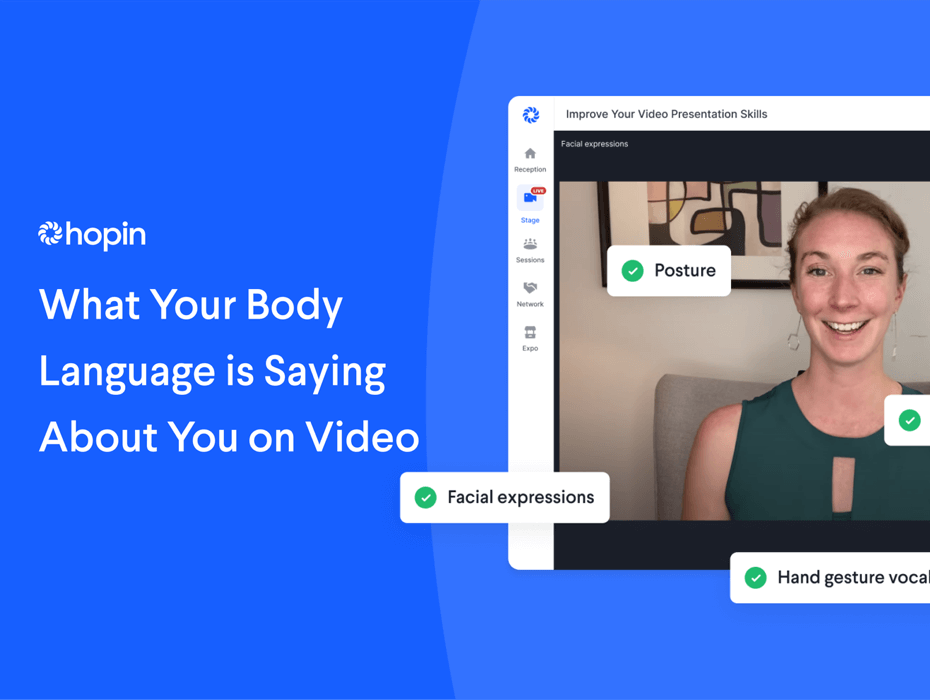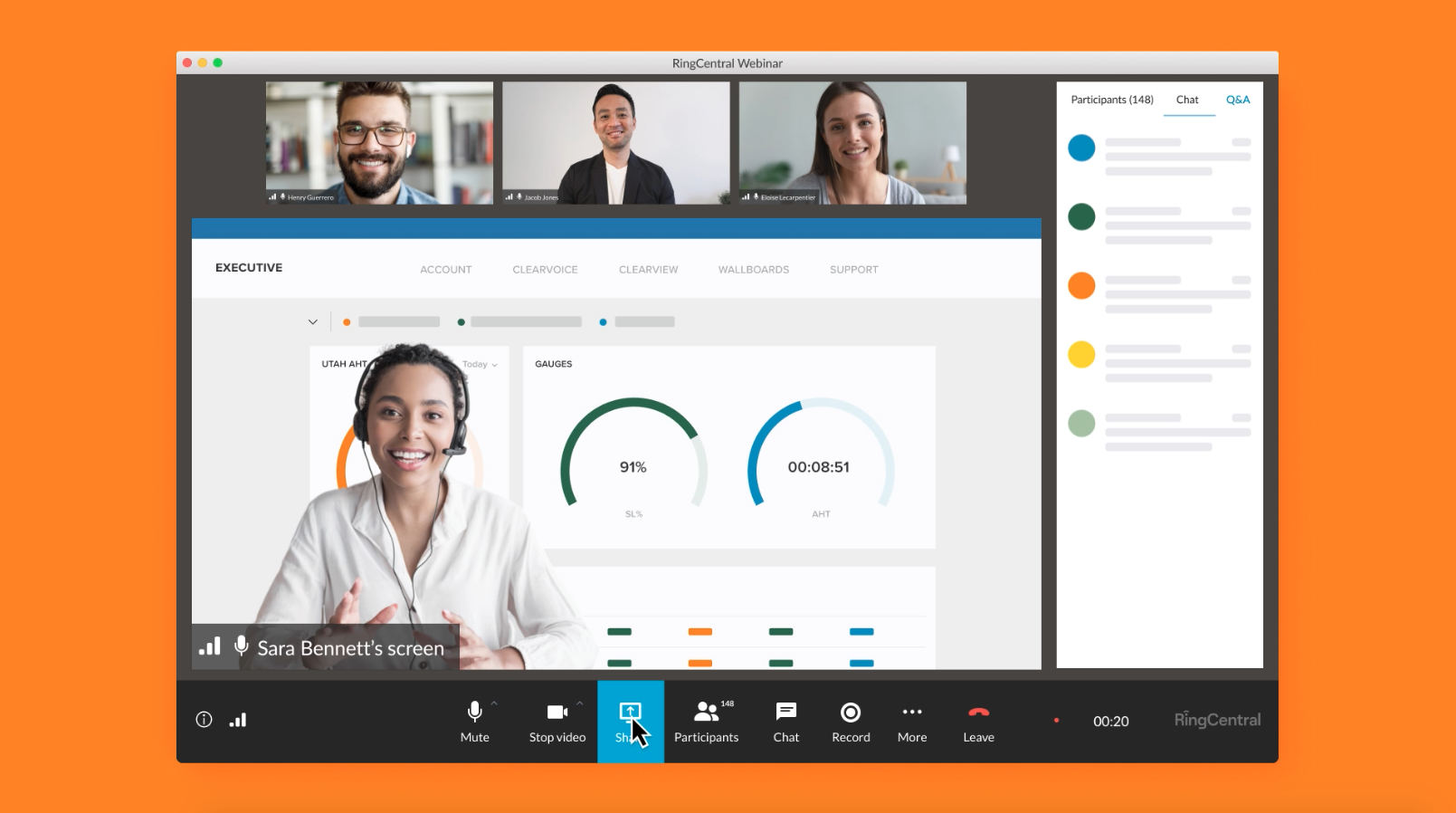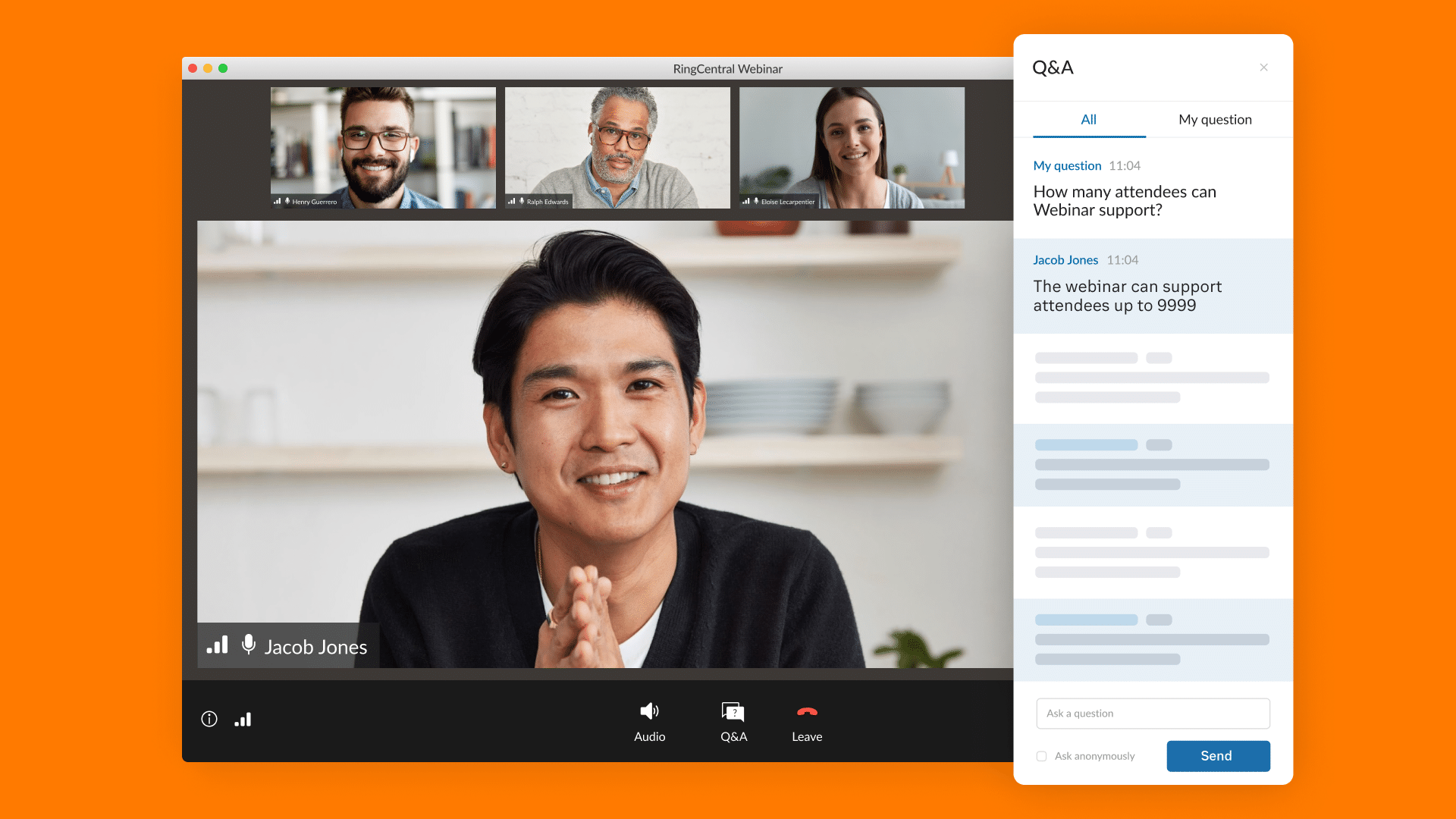Humans have long relied on body language to communicate effectively. From pre-verbal civilizations to nonverbal art forms to anyone who has difficulty verbalizing, body language is often a primary way for people to connect and share with one another.
Whether we’re interacting virtually or IRL, we depend on body language to find meaning, form relationships, and drive impact beyond any words exchanged.
In many ways, our body language is amplified through video communication where there is often a much larger audience (for example, at a virtual or hybrid event) and the opportunity to see people up close on screen –– whether they’re speaking or not.
So, what is your body language saying about you on video? And how can you level up your video presentation skills by focusing on a few aspects of your body language?
Read on for five body language tips from the experts at Virtual Sapiens.
Body language tip #1: Adjust your eye contact for speaking versus listening
Natural instincts around eye contact are quite different online versus in-person.
Plus, on video, every single member of your audience can experience the effect of your direct eye contact––all at the same time.
This is a powerful body language tool and something you could never pull off in person. It’s simply impossible to look at a whole room full of people, in the eyes, at the same time.
When communicating over video, adjust your eye contact technique based on different scenarios:
- When you’re speaking, look into the lens 80-90% of the time. You want your message to land with impact, so use that direct eye contact approach of looking into the lens to achieve this. Make sure you continue blinking and using your natural eye contact cadence.
- When you’re listening, look at your audience if they’re visually available to you. Build a feeling of connection by looking at the faces in your virtual audience and responding based on how attendees are interacting with you. Use active listening cues, such as nodding and head tilting, to amplify the connection.
Watch this video on how to navigate effective eye contact on video.
Body language tip #2: Use hand gestures to add nuance
In some cultures, hand gestures can convey trust, openness, and honesty. They can also demonstrate qualities like firmness, authority, and finality.
You can effectively use hand gestures to add nuance to your virtual communication approach.
A few rules to live by:
- Be intentional. Don’t move your hands too quickly or they might be a blur on camera.
- Give yourself enough space to move your hands freely. That’s a minimum of about an arm’s-length-worth of distance between you and your lens.
- Practice the hand gestures you’ll use ahead of time. Experiment with a variety of hand gestures to give your delivery texture and to help your audience digest what you’re saying. The more visually dynamic you are, the more memorable you’ll be. You want to avoid being a talking head, but don’t overdo it either.
Start with this video to learn more about the types of hand gestures you can employ.
Body language tip #3: Maintain an open and upright posture
Posture is often known as the cornerstone of nonverbal communication. It carries a significant amount of weight in how our audience perceives and receives our message on video.
Dancers in particular are known for completely altering the energy and impression of their presence with different postures.
Strong and open postures convey strength and certainty, whereas closed, turned-away, small postures send a message of fragility, doubt, and timidity.
Practice maintaining open and upright posture as you’re communicating via video to send signals of confidence.
Watch this video to learn more about the power of posture.
Body language tip #4: Use dynamic, engaged facial expressions
The range of facial expressions at our disposal is wide and deep.
Our facial expressions build a standalone narrative for the people we’re communicating with, especially over video, where our faces are front and center.
It can feel very odd to express yourself to a 2D screen, as you sit in your living room, bedroom, or closet.
Here are a few things to keep in mind:
- Develop an arsenal of dynamic, engaged facial expressions you can cycle through. Make sure they’re authentic to you.
- Use your eyebrows to convey interest and excitement.
- Look at your facial expressions as a complement to your gestures and other elements of your body language.
Watch this video for more insight on the intricacies of facial expressions.
Body language tip #5: Take advantage of your camera’s frame
When you’re on your own camera, you’re in the driver’s seat––and you’re on equal footing with other attendees. In the virtual world, no one has a better seat than anyone else.
That tiny video portal, with the capacity to connect you to people around the world, can actually simplify your life. Stay aware of all the body language signals you’re collectively exhibiting within that frame.
Remind yourself that:
- No one sees anything other than what your lens captures.
- Your lens is your audience’s vantage point and you can control how you present yourself physically within that frame.
- You can connect with each member of your audience as though they’re the only person in the room.
Take body language cues from professional performers
A head tilt, a gesture, a gaze –– all these seemingly subtle actions add nuance, context, and emotion to our communication. You can adjust emphasis on each cue depending on what is most comfortable and accessible to you. For example, if gestures are not an option, you can express with intention by focusing on posture, facial, and head movements.
In the world of video communication, we can also draw inspiration from professional performers.
The very best actors, dancers, and singers share two related skills that can transform the way you execute your own video performance:
- An acute awareness of the audience’s vantage point (what their audience sees), and
- A well developed understanding of how body language affects the delivery of every message (how their message lands)
Practicing your body language skills is key to delivering your best performance over video.
Put these new skills to the test on RingCentral Events’ live video streaming service, StreamYard.
Originally published Sep 01, 2022, updated Oct 27, 2023





